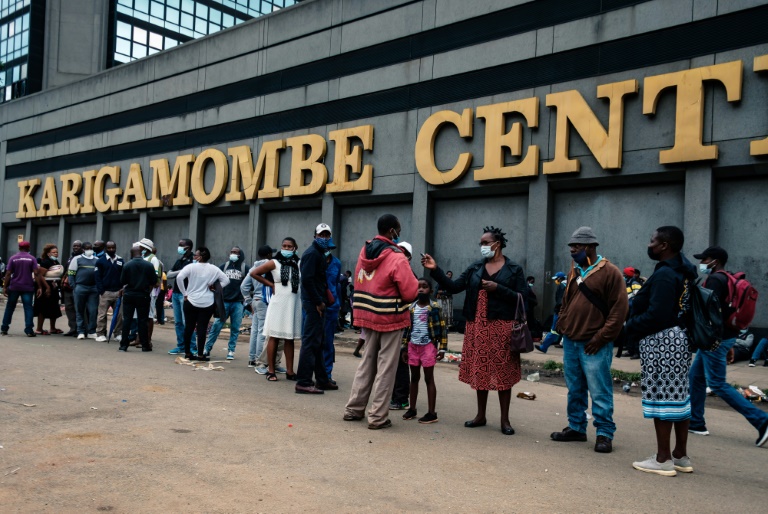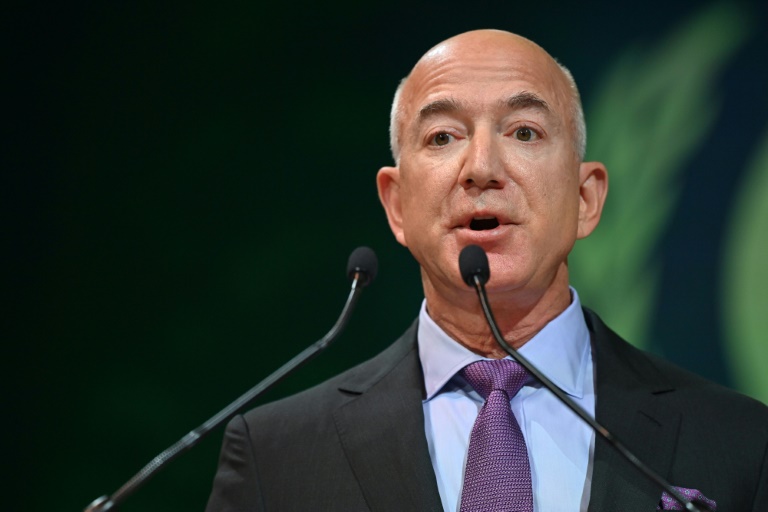Zimbabwe’s central bank launched a new “structured currency” backed by gold on Friday, as it seeks to tackle sky-high inflation and stabilise the country’s long-floundering economy.
The ZiG — short for Zimbabwe Gold — will replace the Zimbabwean dollar which has tumbled in value over the past year, pushing inflation through the roof, Reserve Bank governor John Mushayavanhu said.
“With effect from today… banks shall convert the current Zimbabwe dollar balances into the new currency,” he said, presenting a monetary policy statement.
He also announced a drastic cut in the bank’s main interest rate, from 130 percent to 20 percent.
The ZiG will be “fully anchored and fully backed” by a basket of reserves comprising foreign currency and precious metals — mainly gold, Mushayavanhu added.
The move is aimed at fostering “simplicity, certainty, (and) predictability” in Zimbabwe’s financial affairs, he said, presenting the new banknotes that come in eight denominations ranging from 1 to 200 ZiG.
The Zimbabwean dollar has lost almost 100 percent of its value against the US greenback over the past year.
On Friday, it was officially trading at around 30,000 against its more coveted US counterpart — and at 40,000 on the black market, according to tracker Zim Price Check.
Its poor performance contributed to the southern African country’s high inflation rate, which after climbing well into the triple digits last year, was at 55 percent in March, according to official data.
This has piled pressure on its 16 million people who are already contending with widespread poverty, high unemployment and a severe drought induced by the El Nino weather pattern.
Zimbabweans have 21 days to convert their old cash into new money, Mushayavanhu said.
The new banknotes feature a drawing of gold ingots being minted, as well as Zimbabwe’s famous Balancing Rocks, which already appeared on the old ones.
Zimbabwe boasts vast gold deposits, with the precious metal accounting for almost 25 percent of all exports in January, according to official data.
But analysts have questioned whether Harare has enough reserves to adequately back the currency, and if the latter could suffer from volatility in gold prices.
On Thursday, President Emmerson Mnangagwa inspected the central bank’s vaults that Mushayavanhu — who was appointed earlier this year — said hold 1.1 tonnes of solid gold.
The bank also has almost 1.5 tonnes more abroad, as well as $100 million in cash and precious minerals such as diamonds that if converted into gold would account for another 0.4 tonnes, he added.
All together the reserves’ value totals $285 million, which Mushayavanhu said was “more than three times cover for the ZiG currency being issued”.
But some were sceptical.
“We obviously need more,” said economist Prosper Chitambara, adding that other countries such as neighbouring South Africa had much larger reserves.
“The more the reserves, obviously, the more the confidence and the more your capacity to be able to defend your currency against any shocks.”
The central bank said it would adopt a tight monetary policy, linking money supply growth to growth in gold and foreign exchange reserves.
Soaring prices have brought back memories of 2008, when hyperinflation was so out of control that the central bank even issued a 100-trillion-dollar note — now a collectors’ item.
The government was eventually forced to ditch the local currency and adopt the US dollar as legal tender.
The Zimbabwean dollar was revived in 2019, but it has suffered from much the same issues as its previous incarnation.
Most Zimbabweans prefer to do business, get paid and hold their savings in US dollars.
The government has previously resorted to various expedients to stabilise the economy, including issuing gold coins and launching a gold-backed digital currency but they have yielded little results.
AFP







